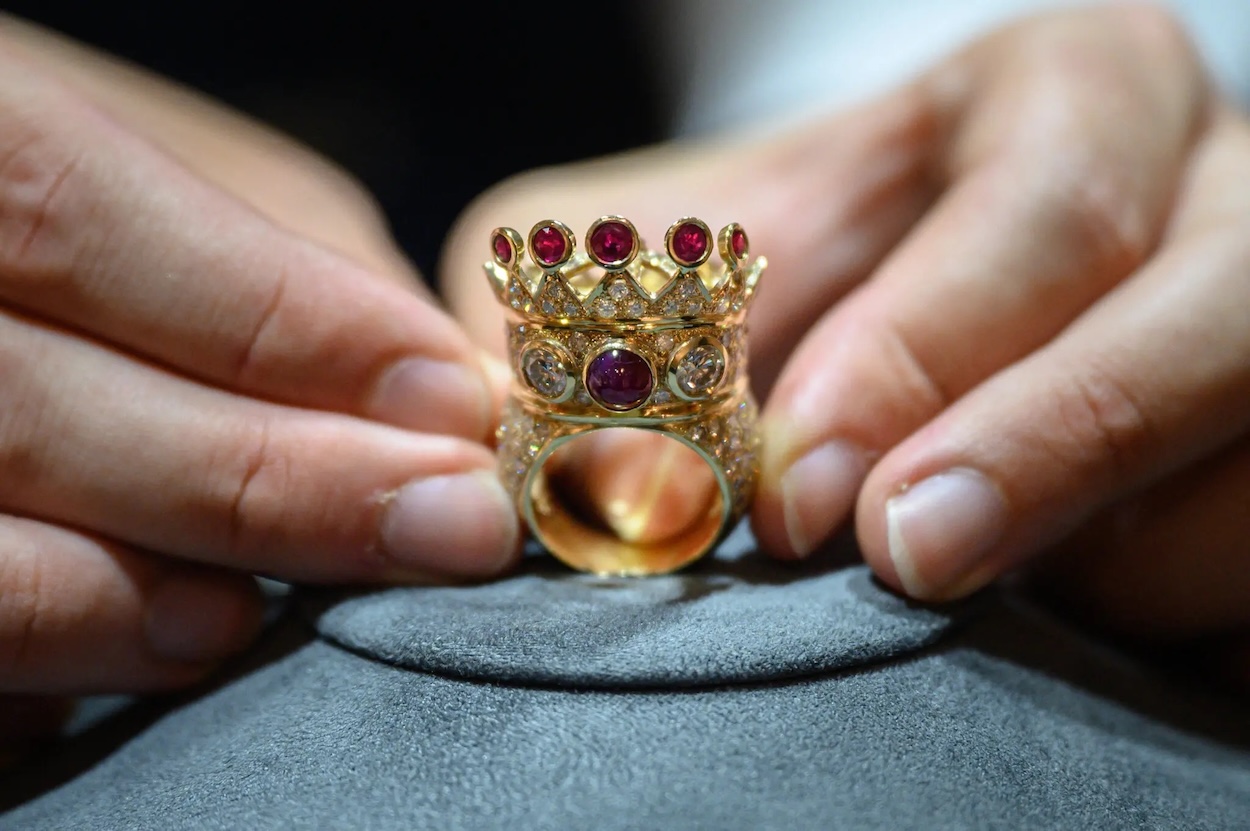Hip hop is having a few high-profile museum moments to toast the genre’s 50th anniversary, but none are looking flashier than the American Museum of Natural History’s celebration of five decades of hip hop jewelry. “Ice Cold” brings together 58 outstanding pieces of bling that have helped define the genre, from giant chains and gleaming grills to diamond pendants that, as Vogue describes, “shine forth with both artistic bravado and a kind of anthropological, cultural significance.” Though the collection’s recent provenance may seem mismatched in an institution known for its dinosaur fossils and entombed ancient specimens, the curatorial team notes that adopting signifiers to flaunt one’s wealth has been happening since the Etruscans.
As flamboyant as it can look, the jewelry does far more than signify deep pockets. Bling can be a conduit for storytelling, commemoration, and aligning with spiritual powers. On that note, expect to see veritable classics that will delight genre connoisseurs and passive listeners alike. Public Enemy’s leather medallion featuring its logo of a Black man caught in a gun crosshairs raised awareness about police brutality. Notorious B.I.G. rapped about a yellow gold Jesus piece in his 1997 hit “Hypnotize.” Nicki Minaj lent her 18-karat white gold Barbie pendant fully encrusted in diamonds and pink enamel. To Alex Moss, the jewelry designer who masterminds pendants for A$AP Rocky and Tyler, the Creator, the confluence of storytelling and artistry embodied by hip hop jewelry elevates it to “art at the highest level.”
One notable piece that wasn’t included: a ring featuring a 14-carat crown encrusted with cabochon rubies and pavé diamonds, designed by Tupac Shakur and last worn at the 1996 MTV Video Music Awards, the “California Love” rapper’s final public appearance before his murder. Drake, the larger-than-life rapper who hails from Canada, snagged the ring at a Sotheby’s auction for $1.01 million in August. The museum wanted to include the ring in “Ice Cold,” but Drake declined. The move bugged Kendrick Lamar, the Pulitzer Prize–winning torchbearer of West Coast rap who credits Shakur as a chief influence. Earlier in the spring, the two artists were embroiled in a well-documented and relentlessly nuclear beef that transpired with the rapid-fire release of multiple diss tracks littered with long-winded personal attacks. Kendrick emerged as the winner, and during his sold-out Juneteenth show at Inglewood’s Kia Forum, he performed one of the tracks, “Euphoria,” with a new lyric: “Give me Tupac ring back and maybe I’ll give you a little respect.”


